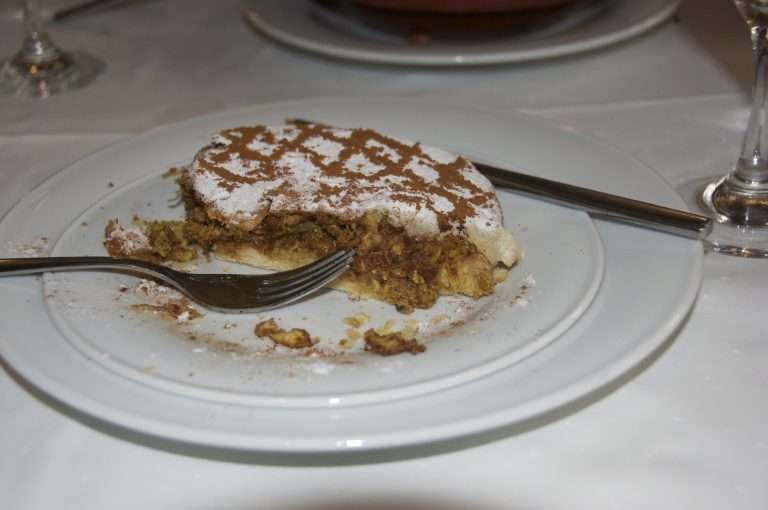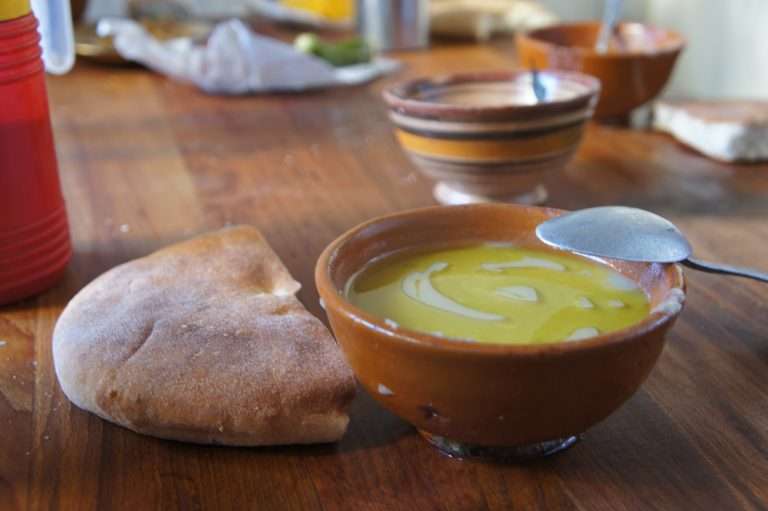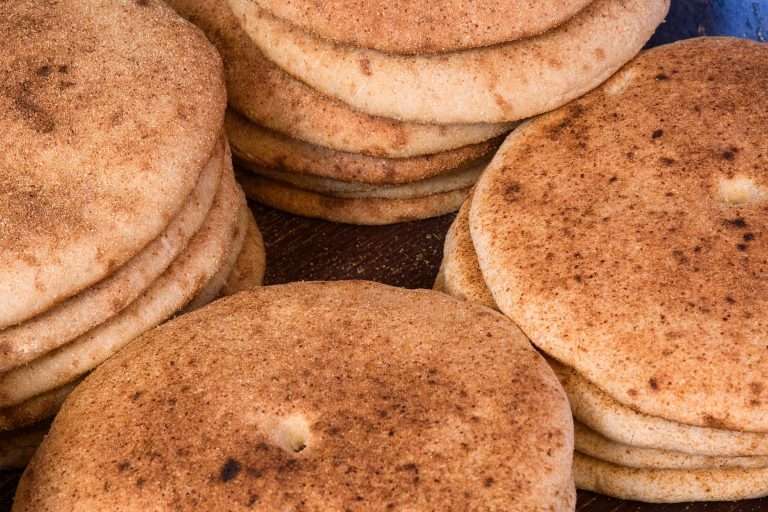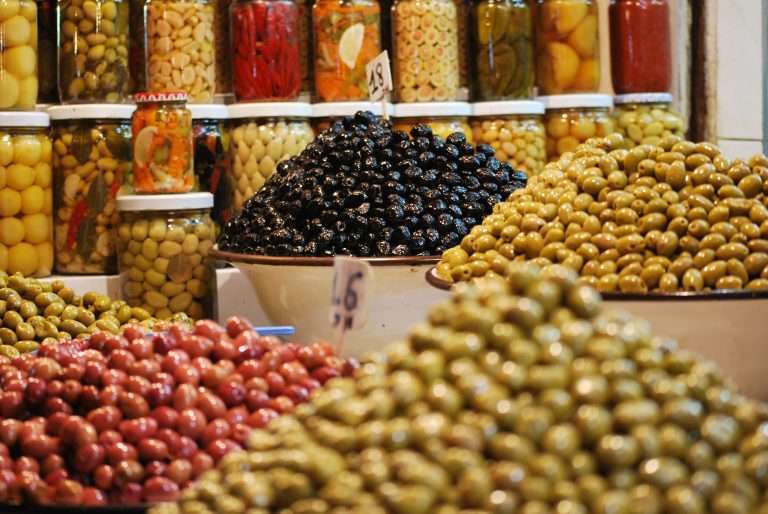Top Morocca Foods & Best Dishes You Must Try
Moroccan cuisine, known for its rich and diverse flavors, is a harmonious fusion of Arabic, Mediterranean, Andalusian, and Berber culinary traditions. Over the course of its history, Morocco has encountered various nations, and these influences are beautifully reflected in its cuisine. When embarking on Moroccan cooking holidays, you can expect a delightful amalgamation of tastes and aromas.
One of the most captivating aspects of Moroccan cuisine is the opportunity to engage with local Berber families and work alongside them. There is nothing quite like immersing yourself in the roots of the country’s culinary heritage and learning from those who have preserved traditional cooking methods for generations.
The Moroccan table is a vibrant display of distinctive and diverse dishes that showcase the country’s rich cultural heritage. Each region in Morocco has its own unique dishes that reflect its history and customs. Some dishes are prepared according to specific rituals or for special occasions, adding a touch of ceremony and tradition to the culinary experience.
Overall, Moroccan cuisine stands as one of the most distinguished international culinary traditions. Its blend of flavors, influenced by the encounters with various cultures, creates a remarkable tapestry of taste that is sure to captivate any food enthusiast. Exploring the flavors of Morocco not only offers a culinary adventure but also provides an opportunity to appreciate the cultural diversity and heritage of the country.
Top popular dishes in Morocco & Top Moroccan Foods
When it comes to culinary travel, few destinations capture the imagination quite like Morocco. Renowned for its vibrant tagines and an array of exotic spices and seasonings, the country is a haven for food enthusiasts. When Moroccan cuisine comes to mind, one immediately thinks of bold and captivating flavors.
Morocco, a perennial favorite among African destinations, needs no introduction. Year after year, it attracts a significant number of visitors, and one of the main draws is undoubtedly its remarkable culinary scene. Numerous studies have consistently ranked Moroccan cuisine among the most renowned in the world, often rivaling the likes of French and Italian cuisines.
If you are the kind of traveler who seeks to immerse yourself in a different culture through its food, Morocco is the ideal choice. Without further ado, here are the top 12 beloved dishes that exemplify Moroccan gastronomy.
- Tagine

Tagine, the most renowned dish in Moroccan cuisine, can be found in virtually every restaurant across the country. Traditionally, it consists of meat, poultry, or fish combined with vegetables or fruits. What makes it particularly striking is that the term “tagine” refers both to the Berber dish itself and the distinctive cooking vessel in which it is prepared, often known for its vibrant colors.
The word “tagine” originates from the Berber term “tagin,” meaning a “shallow earthen pot.” The tagine pot comprises two parts: a flat circular base used for cooking and serving, and a uniquely shaped conical lid that efficiently distributes heat from the top to the entire pot. It comes in various sizes and can be either glazed or left unglazed. Many cooks prefer the unglazed version, as it imparts an earthy flavor to the cooked dishes.
The conical shape of the tagine pot is designed to capture steam and condense the moisture, allowing it to return to the simmering dish below. This reduces the need for excessive water when slow-cooking and tenderizing tougher cuts of meat. Not only does this method ensure the meat remains moist and tender, but it is also practical in areas with limited water supplies.
The key to the delectable flavor of tagine lies in the spices used during the cooking process. These include coriander, ginger, turmeric, saffron, paprika, cumin, cinnamon, ghee, onions, and garlic. Fresh herbs are often incorporated, along with ingredients such as olives, preserved lemon, nuts, and dried fruits. These basic components contribute to the distinctive taste of tagine.
Serving tagine with bread is customary and considered essential. It is almost unthinkable to enjoy tagine without bread, as they complement each other perfectly. Cooking food in a tagine is a healthy method as it involves steaming, which is widely regarded as one of the healthiest cooking techniques. The use of steam helps retain the nutritional value of the ingredients, resulting in wholesome and flavorsome meals.
- Coucous

Couscous, a dish originating from Morocco, is traditionally accompanied by a flavorful meat or vegetable stew. It is customarily prepared on Fridays, the holy day for Muslims, as well as for special occasions like weddings, funerals, or sacred feasts. However, nowadays, it is readily available in restaurants and cafes throughout the week.
Couscous comes in various types, depending on the ingredients used and the ceremonial event it is associated with. Among these, the most popular variation is “the seven vegetables” couscous, which includes ingredients like pumpkin, carrots, potatoes, tomatoes, white and yellow turnips, cabbage, onions, and sometimes lentils or white beans.
- Tanjia

Tanjia, much like Tagine, is a culinary delight cooked in a clay pot, bearing its name from the vessel it is prepared in. Traditionally, this dish features succulent chunks of beef or lamb infused with an array of aromatic spices. The distinctive aspect of Tanjia lies in its cooking process, where it is slow-cooked in an urn-shaped pot that is carefully lowered into an underground oven.
The association of Tanjia with Marrakech, often referred to as the “red city,” is strong and prevalent. It is renowned as the city’s most famous culinary masterpiece, graciously served by Marrakech locals to honor their guests. Tanjia tantalizes the taste buds with its unique flavors, leaving a lasting impression of its exceptional taste.
- Pastela

If you’re fond of the combination of sweet and salty flavors, then you absolutely must give Pastilla a try. This delicious flaky pastry is traditionally crafted using pigeon, but nowadays chicken is more commonly used. You can also find vegetarian versions or variations with different types of meat. Pastilla is often served as a dessert during formal gatherings and traditional festivities. It is regarded as one of the most extravagant dishes in Moroccan cuisine.
The mere mention of Pastilla brings to mind the Kingdom of Morocco, particularly the captivating city of Fez. It requires meticulous preparation, which has elevated it to a prominent position among other renowned Moroccan dishes like Couscous and Tagine, both in terms of taste and the high-quality ingredients it incorporates.
In Fez, chicken or pigeons are typically used, while in the northern regions of Morocco, fish and seafood are the preferred ingredients. In the southeast, such as Rissani (Errachidia), a unique variation resembling bread, called “El Medfouna,” is prepared.
- Harira

If you’re fond of the combination of sweet and salty flavors, then you absolutely must give Pastilla a try. This delicious flaky pastry is traditionally crafted using pigeon, but nowadays chicken is more commonly used. You can also find vegetarian versions or variations with different types of meat. Pastilla is often served as a dessert during formal gatherings and traditional festivities. It is regarded as one of the most extravagant dishes in Moroccan cuisine.
The mere mention of Pastilla brings to mind the Kingdom of Morocco, particularly the captivating city of Fez. It requires meticulous preparation, which has elevated it to a prominent position among other renowned Moroccan dishes like Couscous and Tagine, both in terms of taste and the high-quality ingredients it incorporates.
In Fez, chicken or pigeons are typically used, while in the northern regions of Morocco, fish and seafood are the preferred ingredients. In the southeast, such as Rissani (Errachidia), a unique variation resembling bread, called “El Medfouna,” is prepared.
- Moroccan Salads

Moroccan cuisine showcases a delightful array of cold and hot salads that are commonly served as appetizers before a meal. Let’s explore some of the well-known Moroccan salad varieties:
Tomato Preserve: This dip boasts a jam-like texture created by roasting tomatoes and sweetening them with honey, cinnamon, and orange flower water. While it may seem unusual, its sweet flavor works wonders in stimulating the appetite.
Moroccan Assorted Salad: A traditional medley of cucumbers, onions, tomatoes, and lettuce or mint. Some variations incorporate ingredients such as rice, eggs, beets, or even potatoes. This salad is typically served as an appetizer, although it can also accompany Couscous or Tagine dishes.
Taktouka: A refreshing cold salad comprising roasted green peppers and tomatoes, garnished with coriander, lemon, cumin, garlic, and olive oil. Unlike many other salads, the vegetables are finely chopped instead of being pureed.
Matbukha: Similar to Taktouka, Matbucha features roasted bell peppers without tomatoes. It is seasoned with chili pepper and garlic, lending the salad a fiery and spicy flavor.
Zaalouk: Among the most beloved Moroccan salads, Zaalouk is a delectable blend of cooked eggplant, tomatoes, and a combination of local spices. It can be savored on its own or scooped up with bread for a delightful culinary experience.
- Bisara

Bisara is a nourishing and flavorsome soup that boasts a velvety texture, crafted from dried fava beans. These beans are meticulously peeled and simmered in water alongside a medley of vegetables, aromatic spices, and a drizzle of olive oil.
This hearty delicacy is traditionally served piping hot, accompanied by barley or wheat bread, and is enjoyed during lunch, dinner, and occasionally even for breakfast in certain regions. It is customary to garnish Bisara with a generous drizzle of fresh olive oil and a sprinkle of cumin, enhancing its taste and presentation.
- Chebakia

Chebakia holds the distinction of being one of the oldest and most beloved desserts in Moroccan culinary heritage. Renowned for its delicate floral design and delightful crunch, this sweet treat is traditionally prepared during the holy month of Ramadan. In Morocco, one can easily spot Chebakia gracing the vibrant street food markets. If you happen to have trouble locating them, simply keep an eye out for the buzzing company of bees that frequently hover around the Chebakia stalls.
Though the process may appear straightforward, shaping the dough into the desired form can be a time-consuming endeavor. To craft Chebakia, thin strips of sesame-spiced dough are deftly rolled to resemble blooming roses before being immersed in hot oil until they achieve a glorious golden brown hue and attain a satisfying crispiness.
Following this, the cookies are generously coated with a syrup derived from a harmonious blend of honey and orange blossom water, imparting a luscious sweetness. A finishing touch of sesame seeds adds both visual appeal and an additional layer of flavor.
While traditionally served as a dish to break the fast during Ramadan, Chebakia is also frequently prepared to commemorate other joyous occasions. Its irresistible allure extends beyond the confines of Ramadan, making it a delightful treat for various celebrations throughout the year.
- Moroccan Khobz (Bread)

Moroccan cuisine is often accompanied by a customary offering of Khobz, a traditional bread served before each meal. This bread, with its crispy crust, is traditionally baked in shared wood-fired ovens. It holds a prominent position as a staple food on Moroccan tables. Additionally, in Morocco, a diverse array of bread types exists, including Harcha, a rich and buttery bread, Msemen, a flaky and layered flatbread, and Baghrir, a spongy pancake.
- Olives

As the world’s fifth-largest producer and exporter of olive oil, it comes as no surprise that olives hold a significant place in Moroccan gastronomy. It is customary to receive a small bowl of seasoned olives before each meal, showcasing their integral role in Moroccan cuisine. These spiced olives can be readily found at bustling street food markets and are a ubiquitous appetizer in the country.
- Fried Sardines (lhout)

It’s fascinating to note that Morocco stands as one of the leading exporters of sardines. Consequently, it comes as no surprise that sardines are a beloved and popular local snack, readily available at coastal street food markets across the country. Moroccans possess a unique and distinctive approach to sardine preparation.
The process begins by purifying the fish and washing it with vinegar, ensuring its cleanliness and freshness. A delightful mixture is created, combining finely chopped coriander, minced garlic, cumin, salt, caraway seeds, ginger, and sweet red pepper. This aromatic blend is then infused with lemon juice and a drizzle of oil.
The sardines are meticulously arranged, and a portion of the mixture is applied to each fish. The slices of sardines are carefully layered upon each other, ensuring an even distribution of flavors. A light dusting of flour is added to prevent sticking before immersing them in hot oil for frying.
This delightful dish is often accompanied by classic sides such as French fries or Zaalouk, a flavorful eggplant and tomato salad. The combination of crispy, spiced sardines with these accompaniments creates a harmonious culinary experience.
- Moroccan Whiskey (Mint Tea)

Moroccan mint tea, also known as Moroccan whiskey, is a delightful beverage crafted from a foundation of green tea combined with spearmint leaves and sweetened with sugar. This iconic drink holds great significance in Moroccan culture, serving as a focal point of social gatherings and interactions.
The art of pouring Moroccan mint tea is a spectacle in itself, with skilled tea pourers effortlessly pouring the tea into a small glass from a considerable height of a foot or more. This technique creates mesmerizing bubbles that enhance the visual appeal and signify that the tea is ready to be savored.
The process of preparing and serving Moroccan mint tea is steeped in tradition and ceremony. Traditionally, it is the responsibility of the male head of the family to skillfully brew the tea, which is then presented to guests as a warm gesture of hospitality. Pouring the tea from a height serves the purpose of gently aerating the beverage, enriching its flavor and aroma.
Moroccan mint tea is enjoyed on various occasions and throughout the day and night. It is commonly consumed before, after, and with meals, exemplifying its versatility as a refreshing and cherished beverage. Indulging in a cup of Moroccan mint tea is not just a simple act, but a cherished ritual that brings people together and creates moments of connection.
- Brochettes (Kebabs)

In Morocco, brochettes are a popular culinary delight. These skewered meat dishes are widely enjoyed throughout the country. Brochettes typically consist of marinated pieces of chicken, lamb, or beef threaded onto skewers and grilled to perfection. The meat is often seasoned with a blend of aromatic spices, such as cumin, paprika, and herbs, which infuse it with irresistible flavors.
These mouthwatering brochettes can be found at various food stalls, street markets, and restaurants, enticing locals and visitors alike with their enticing aroma and delicious taste. Whether enjoyed as a quick snack or a satisfying meal, brochettes in Morocco are a must-try for any food lover.
Final Thoughts On Moroccan Cuisine
In conclusion, Moroccan cuisine offers a tantalizing journey for the taste buds, showcasing a diverse range of flavors, spices, and culinary traditions. From the iconic couscous and tagine to the hearty harira soup and delightful pastilla, the Moroccan culinary landscape is filled with rich and vibrant dishes.
Indulge in the aromatic mint tea, savor the irresistible brochettes, and explore the array of Moroccan bread and pastries. Each bite is a fusion of tradition, history, and cultural heritage. Whether you’re exploring the bustling street food markets or dining in a traditional restaurant, the top Moroccan foods will leave a lasting impression on your palate and create unforgettable culinary experiences. Prepare to be enchanted by the exquisite flavors and warm hospitality that make Moroccan cuisine truly exceptional.
Travel and Enjoy This Top Moroccan Food & Dishes
- Marrakech Private Tours
- Fes Private Tours
- Casablanca Private Tours
- Tangier Private Tours
- Agadir Private Tours


0 Comment